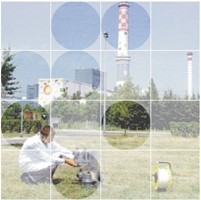More about the Institute |
|
Evolvement of research areas More recently, the Institute initiated a multidisciplinary approach to studies of pollution, as the best approach to protecting the environment. Bio-indicators, including lichens, moss, fungi, roe deer and the ubiquitous Slovenian bee, are in use as long-term monitors of air pollution. In particular, levels of toxic heavy metals, specific organic pollutants and radionuclides in the form of electrofilter ash and contaminated air particulates are regularly monitored, the heavy metals being part of a European Project. |
J. Stefan Institute, Jamova 39, 1000 Ljubljana, Slovenia, Telephone: +386 1 477 39 00 |

